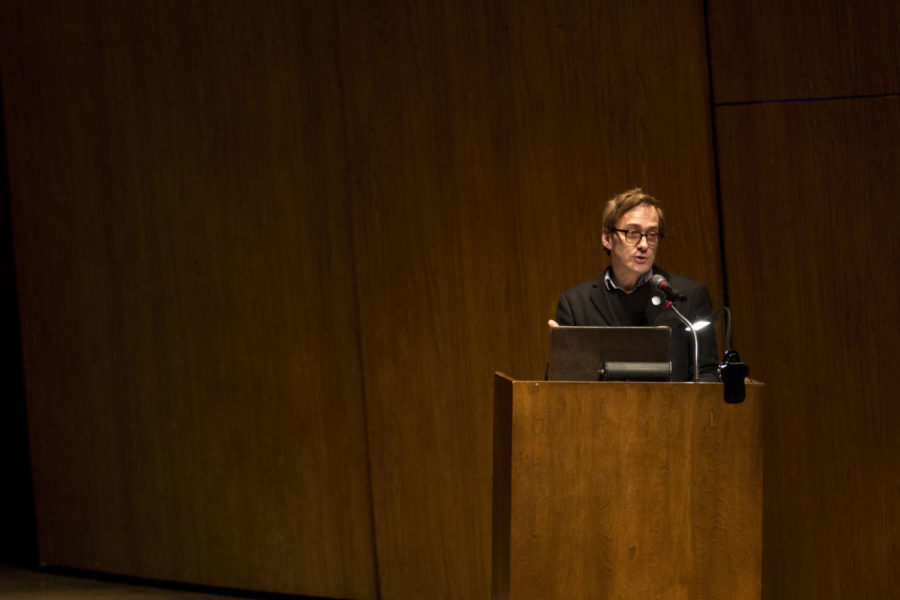Photographer shares unique processes behind his photography as part of lecture series
UK students, faculty, and staff listened to photographer Dan Estabrook speak about his artwork as part of the Robert C. May photography lecture series on Saturday, February 3, 2018 in the Singletary Center for the Arts on UK’s campus in Lexington, Ky. Photo by Arden Barnes | Staff
February 3, 2018
During a lecture at UK, a New York-based photographer shared his love for art and the “absurd.”
About 200 people attended photographer Dan Estabrook’s lecture in the recital hall in the Singletary Center for the Arts on Feb. 2.
Estabrook began his lecture with a pastel self-portrait drawn when he was 15 years old. He took art classes three days a week at the Boston Museum of Fine Arts before studying alternative photographic processes with Christopher James as an undergraduate at Harvard.
“I remember having friends who were trying to choose something to do and I was sort of shocked because I felt like something had already chosen me,” Estabrook said. “In ways I was lucky, but in many ways it was just me listening to what I knew I really wanted to do.”
Estabrook’s artwork focuses on making contemporary photos with historical nineteenth-century photographic processes, including caloptypes and salt prints, gum bichromate prints and carbon prints.
“We’ve always been looking back,” Estabrook said. “What I’ve been doing is something artists have always done.”
Estabrook’s photography is created to be both personal and universal, depicting tropes most viewers would understand, such as falling in love, loss and introspection on one’s life, while also looking back to Victorian-era photography that walked the line between scientific enquiry and poetic symbolism.
Looking to antiquity, Estabrook’s work sometimes took to the “absurd”— as with historical processes, when photographers would add obvious details to photographs post process. Estabrook took this idea and ran with it, sometimes making his additions over the top and very obvious.
Estabrook was the third speaker this year as part of the Robert C. May lecture series held at UK.
“We have four lectures a year so we look for a variety of people working in different modes of photography,” said Janie Welker, the curator of the UK Art Museum, at the first R. C. May photography lecture in the fall, featuring Lori Nix. “We try to get a good balance… I try very hard to find a diverse group of photographers.”
Arts Administration senior Hannah Sturgill attended the lecture as a requirement for her dark room photography class, which teaches the basics of many of the processes Estabrook uses in his work.
Sturgill said she enjoyed Estabrook’s message that while not all artwork is necessarily 100 percent unique, it is all important and artwork nonetheless.
Estabrook’s work is being shown at the UK Art Museum until Apr. 1.
































































































































































